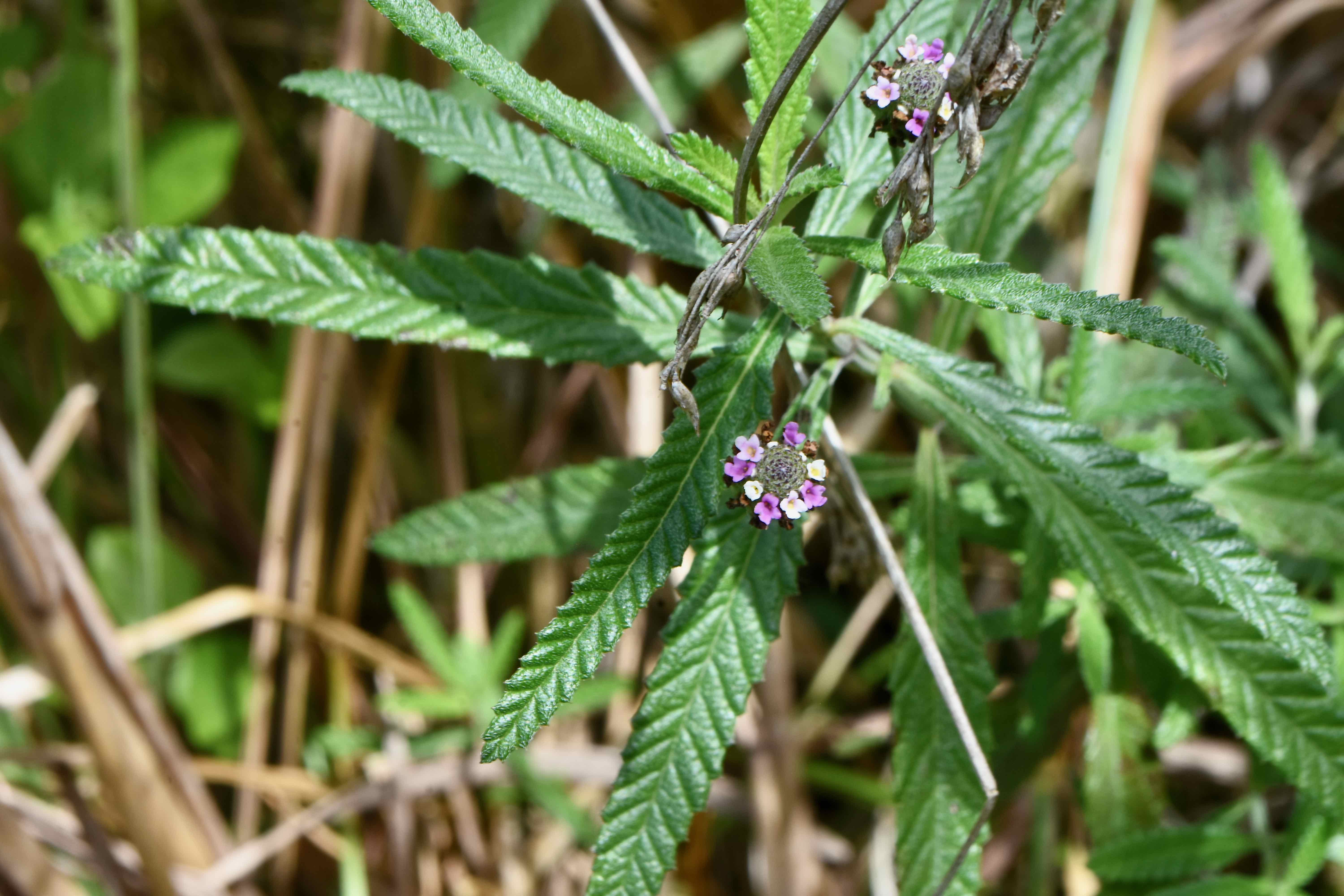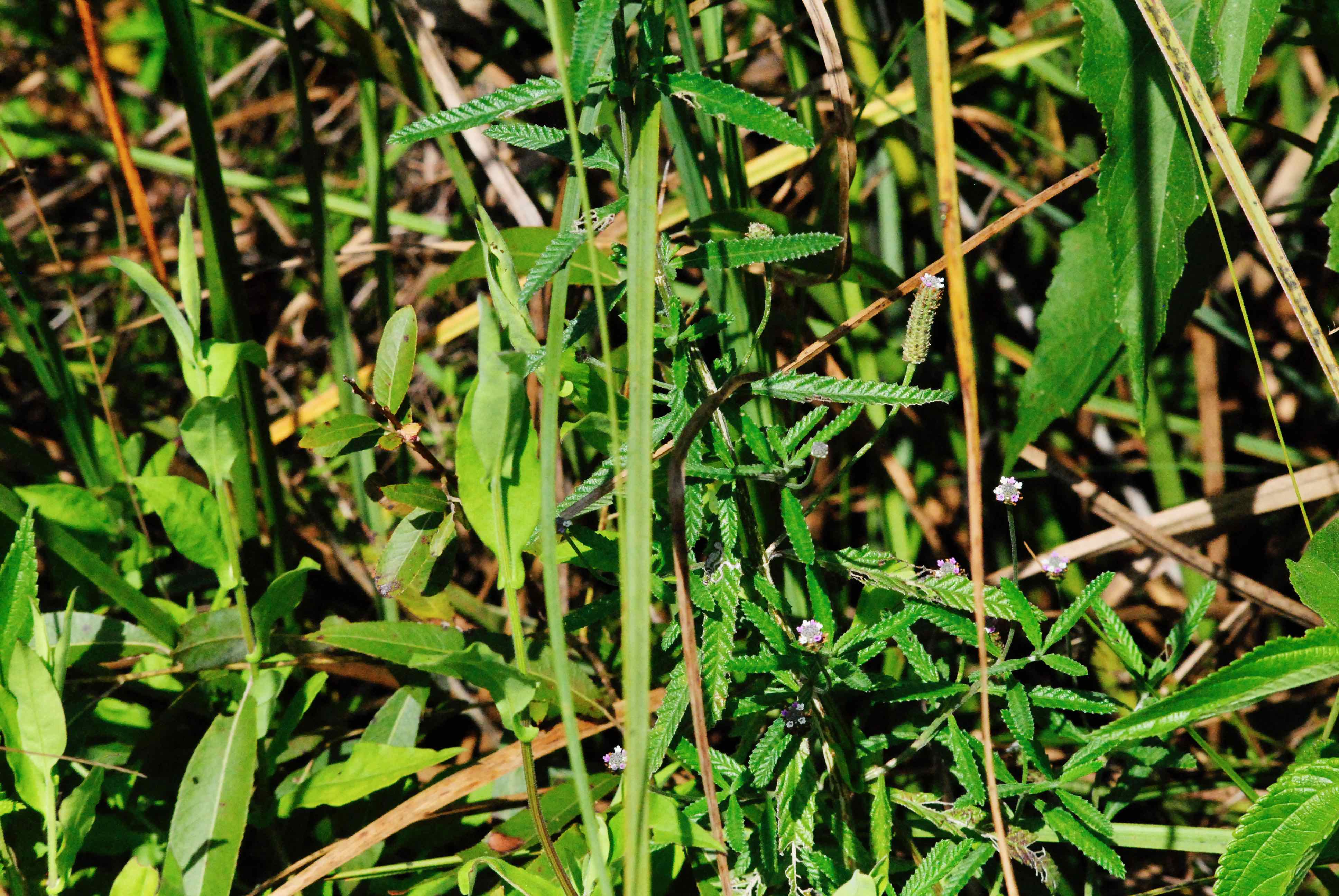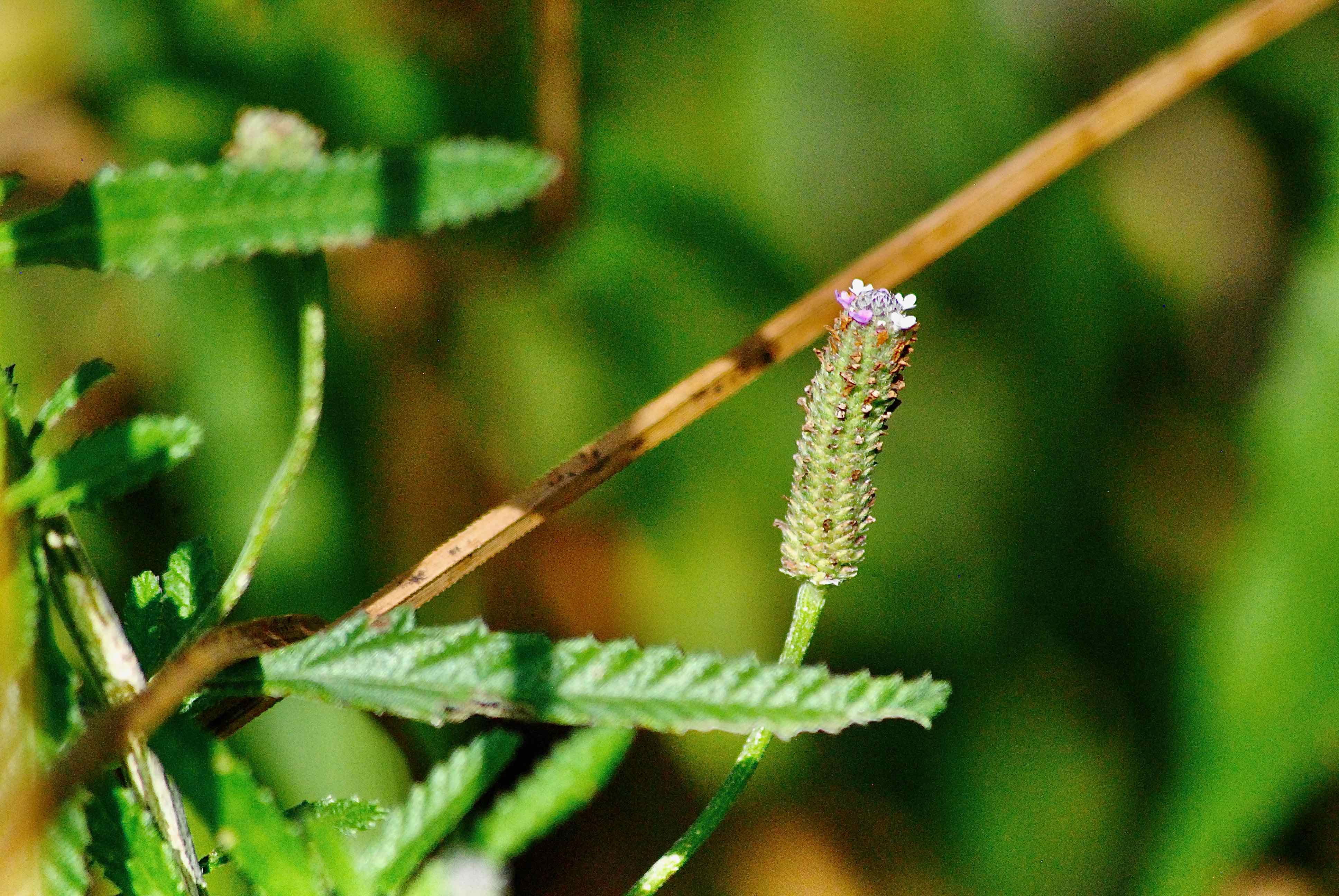
Southern fogfruit, photographed at Everglades Holiday Park, Fort Lauderdale, Broward County, in February 2020.
Southern fogfruit, Phyla stoechadifolia, is a plant with limited range and limited habitat. In the United States, it's only found in Florida, and within Florida only in Miami-Dade, Broward and Collier counties.
It is a Florida native, but an endangered one. Unlike its more abundant and seemingly ubiquitous cousin, turkey tangle fogfruit, southern fogfruit grows only in a few wet habitats — pine rocklands, marl prairies of the southern counties of the Peninsula as well as wet prairies and on the edges of freshwater bodies. It needs moist to wet soil and can't tolerate long dry spells.
It's also found in parts of Mexico, the Bahamas, Caribbean, Central America and South America (Venezuela). But even in this wider area, its future is uncertain because of the limited places where it grows.
It is a medium-sized plant, much larger and more upright than the prostrate turkey tangle fogfruit. It will grow to a foot to a foot-and-a-half tall, with long, narrow and thick leaves with deep veins and sharply serrated edges. The leaves align opposite each other in pairs along woody stems. It will creep along the ground and form large, sometimes dense patches. It is a perennial.
Southern fogfruit flowers grow on cylindrical heads throughout the year. They are tiny and various shades of whites, pinks and purples. Collectively, they can be attractive. The serrated leaves, the elongated flower heads and the size of the plant itself help distinguish southern fogfruit from its cousin.
Southern fogfruit may serve as a host plant for the caterpillars of the common buckeye, phaon crescent and white peacock butterflies. It's also a source of nectar for a lengthy list of other butterflies, including the ceraunus blue, little metalmark, gray hairstreak, tropical skipper, queen and others.
In some places, the aromatic leaves are used to make tea. In Mexico, some native cultures use the plant medicinally to soothe gastrointestinal ailments.
It can be used in landscaping; the Institute for Regional Conservation in Delray Beach recommends it for natural landscapes and restorations and says it can be grown easily from clippings. Southern fogfruit is occasionally available from nurseries that specialize in growing native plants.
Southern fogfruit is a member of Verbenaceae, which includes lantana. A taxonomic note: older references might list the plant as Lippia stoechadifolia. Other common names include southern matchsticks.
Click on photo for larger image
Links for Southern Fogfruit



